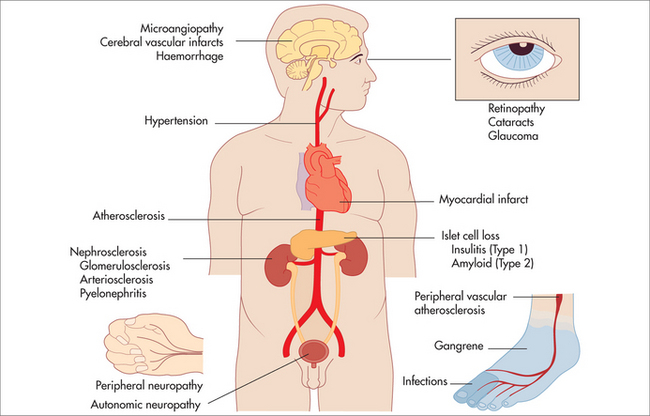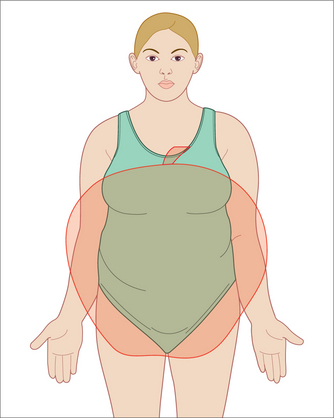chapter 26 Diabetes
INTRODUCTION AND OVERVIEW
Diabetes mellitus is classified into several types:
RISK FACTORS AND PRIMARY PREVENTION
AETIOLOGY
Type 1 diabetes
Type 1 diabetes constitutes around 5–10% of diabetes cases. Aetiological factors are the following:
Type 2 diabetes
Type 2 diabetes, being strongly related to lifestyle, is most common in affluent countries, where there is abundant food along with sedentary occupations and a significant uptake of labour-saving devices. Within those affluent countries, however, type 2 diabetes is more common among lower socioeconomic groups, where poor-quality food, social disadvantage and poorer education have their impact. In either case, the cause of the condition being largely lifestyle related also means that it is preventable and can be managed with appropriate and sustained lifestyle change. To illustrate how important simple lifestyle factors are in diabetes prevention, never smoking, having a BMI < 30, exercising moderately for 3.5 hours per week and following a few healthy dietary principles (high intake of fruit, vegetables and wholegrain bread, and low meat consumption) compared with not having any of those four factors was associated with a 93% reduced risk of developing type 2 diabetes over 8 years of follow-up.3
PRIMARY PREVENTION
Nutritional and environmental
Pre-conception counselling and pregnancy
Maternal malnutrition and overnutrition during pregnancy are associated with subsequent type 2 diabetes in the offspring.5 Primary prevention needs to start with pre-conception counselling of women planning pregnancy, with advice on exercise and nutrition to maintain optimal weight and nutritional status during the pregnancy.
Infant supplements
A systematic review of observational studies found that giving infants vitamin D supplements could protect them from type 1 diabetes.6 Infants given the supplement had an almost 30% reduced risk of diabetes compared with those who were not supplemented. This is particularly important in breastfed infants of vitamin-D-deficient mothers.
Case detection
Proactive screening of asymptomatic patients
The following groups of asymptomatic patients should be tested:7
Blood glucose level
Interpretation of blood glucose level (BGL) results:
Re-testing should be performed under the following circumstances:
MANAGEMENT
INITIAL ASSESSMENT
History
Examination
Comprehensive physical examination, including:








